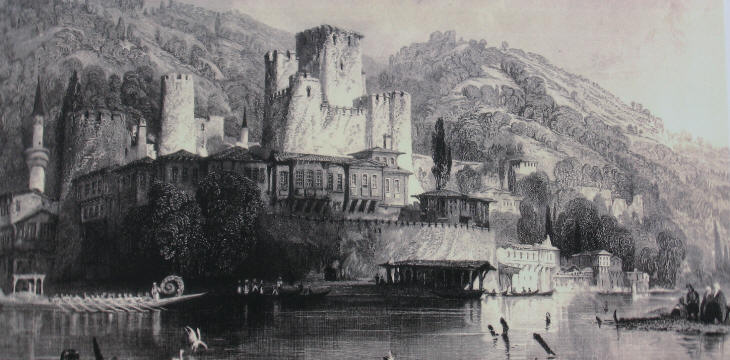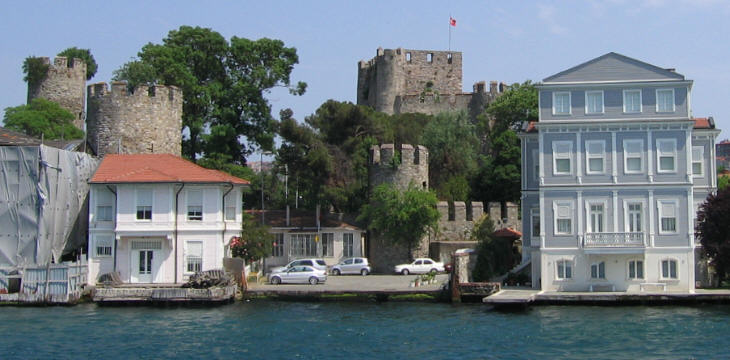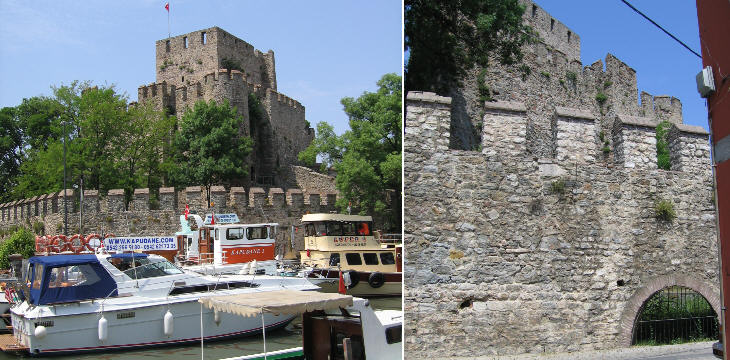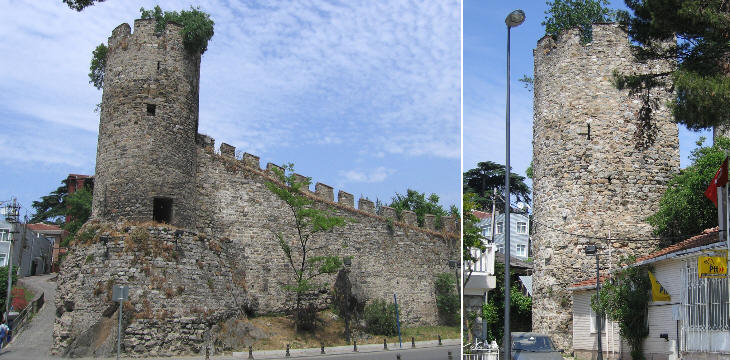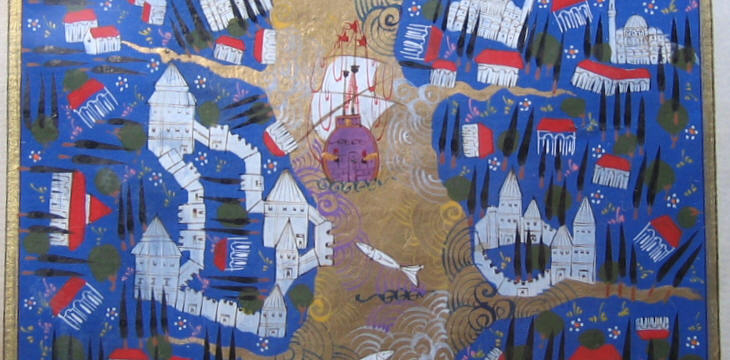  What's New! Detailed Sitemap All images © by Roberto Piperno, owner of the domain. Write to romapip@quipo.it. Text edited by Rosamie Moore. Page added in July 2006. |
  Anadolu Hisar Anadolu Hisar(detail of an Ottoman miniature showing Rumeli Kavagi, a lost fortress on the Bosporus) Hisar means mountain/rock so Anadolu Hisar means the rock in Anatolia: the small fortress is located on the Bosporus, closer to Constantinople, than to the Black Sea.
Anadolu Hisar was built by Sultan Bayezit I (1389-1402) to move his troops from Anatolia to Europe safely. In particular the fortress was built to support the siege of Constantinople enforced by the Sultan in 1396-97. The other purpose of the fortress was to block supplies to Constantinople from the remaining Byzantine possessions in the Black Sea and in particular from Trebizond.
Byzantines and Ottomans were not the only players on the Bosporus. Two other powers had strong interests in controlling the Bosporus: Venice and Genoa. It was a sort of strategy game where each player pursued his own advantage and changes of alliances were very frequent with one remarkable exception: Venice and Genoa would never stay on the same side. Genoa had a strong economic influence in the region with a well organized trade route on the Black Sea. Relations between Genoa and the Ottomans were generally good and in 1354 the Ottomans established their permanent rule over a series of towns on the European coast of the Sea of Marmara thanks to an alliance with Genoa. For this reason the Genoese did not react to the construction of Anadolu Hisar.
The main purpose of the fortress was to protect a small bay where a few Ottoman ships could moor and to provide a secure location for the sultan's troops while they were waiting to be ferried across the Bosporus. A small stream near the fortress provided a supply of fresh water.
The fortress was composed of an inner square castle surrounded by walls strengthened by a few towers. At that time artillery had not yet been developed in Europe, so Anadolu Hisar was designed to cope with catapults and similar siege engines.
The threat posed by Anadolu Hisar to the passage of hostile ships was rather limited, even when towards 1450 new weaponry (cannon and bombards) was introduced. The fortress was built on a bay and the Bosporus was at that point large enough for ships to sail along the European side without great risk of being hit. Sultan Mehmet II (1451-81) realized that to effectively block supplies to Constantinople he needed a stronger fortress on the other side of the Bosporus: Rumeli Hisar (the rock of Europe). Fortresses of the Sultans - Introduction Fortresses built before 1453: 1 - Anadolu Hisar 2 - Rumeli Hisar Fortresses built after 1453 and before 1657: 3 - Kale Sultanieh 4 - Kilitbahir Fortresses built after 1657: 5 - Seddulbahir 6 - Imbro 7 - Tenedo Clickable Map of Turkey showing all the locations covered in this website (opens in another window) |
